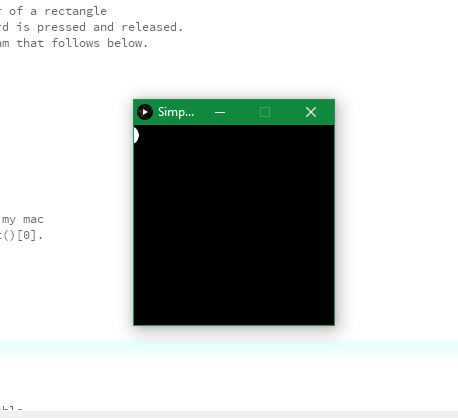

Greetings, here lies my work-log at
______ _ ___ _ _____ _____ __ ______ | ___| | | / _ \ | | / __ \| _ |/ | |___ / | |_ __ _| |__ / /_\ \ ___ __ _ __| | ___ _ __ ___ _ _ `' / /'| |/' |`| | / / | _/ _` | '_ \| _ |/ __/ _` |/ _` |/ _ \ '_ ` _ \| | | | / / | /| | | | / / | || (_| | |_) | | | | (_| (_| | (_| | __/ | | | | | |_| | ./ /___\ |_/ /_| |_./ / \_| \__,_|_.__/\_| |_/\___\__,_|\__,_|\___|_| |_| |_|\__, | \_____/ \___/ \___/\_/ |_|
Coming from a design background, i was suggested to experiment with processing, with all the familiarity gained with the arduino IDE, processing would be nice - they said .


In the end, i managed to interface with my LM35 input sensor and create a very wobbly ellipse that would move across a range of detected temperatures
I used OBS (Open Broadcasting Studio) for this following demo
Start a new sketch >> Open an example sketch - serial read >> mpdify the code >> Map the serial data from the sensor >> Render an ellipse in a GUI with it's centre moving across a specified range of input values

It's a simple range, within which the ellipse moves across to denote a range of 29 to 70 degrees celsius
comms happen over TX, RX over a 5v FTDI wire RS232 protocol
The problem was that the temperature increase was only uptil 60-70, which wasnt producing enough movement in the interface.So, the value was mapped to 200, which solved it
/**
* Simple Read for LM35 sensor
*
* I modified the 'simple read' sketch
* increased the mapped range to 200 to increase the visual change in motion for this example
*/
import processing.serial.*;
Serial myPort; // Create object from Serial class
int val;
void setup()
{
size(200, 200);
// I use an Ubuntu OS based laptop
// and the correct portname is ttyUSB0
//
//
String portName = Serial.list()[1];
myPort = new Serial(this, portName, 9600);
}
void draw()
{
background(0);
if ( myPort.available() > 0) { // If data is available,
val = myPort.read(); // read it and store it in val
println(val);
}
val=(int)map(val, 30, 70, 0, 200);
ellipse(val, 10, 20, 20);
}
#include //library to replace hardware serial
SoftwareSerial myserial(3, 4); // TX and RX pins (transmit and recieve)
#define tempPin A1 //Defining the pin A1 as the data pin
int val;
void setup()
{
myserial.begin(9600); //serial begins at 9600 baud rate
pinMode(A1, INPUT); //pin A1 becomes an input now
}
void loop()
{
val = analogRead(tempPin);
float mv = ( val / 1024.0) * 5000; //mapping analog values to relevant temperature readings
float cel = mv / 10;
float farh = (cel * 9) / 5 + 32;
myserial.print((char)cel);
delay(10);
}
A relatively simple undertaking but was filled with a wierd sense of gratification. To visualise abstract ranges is fun. I would want to go further into computer graphics and systems like OpenGL